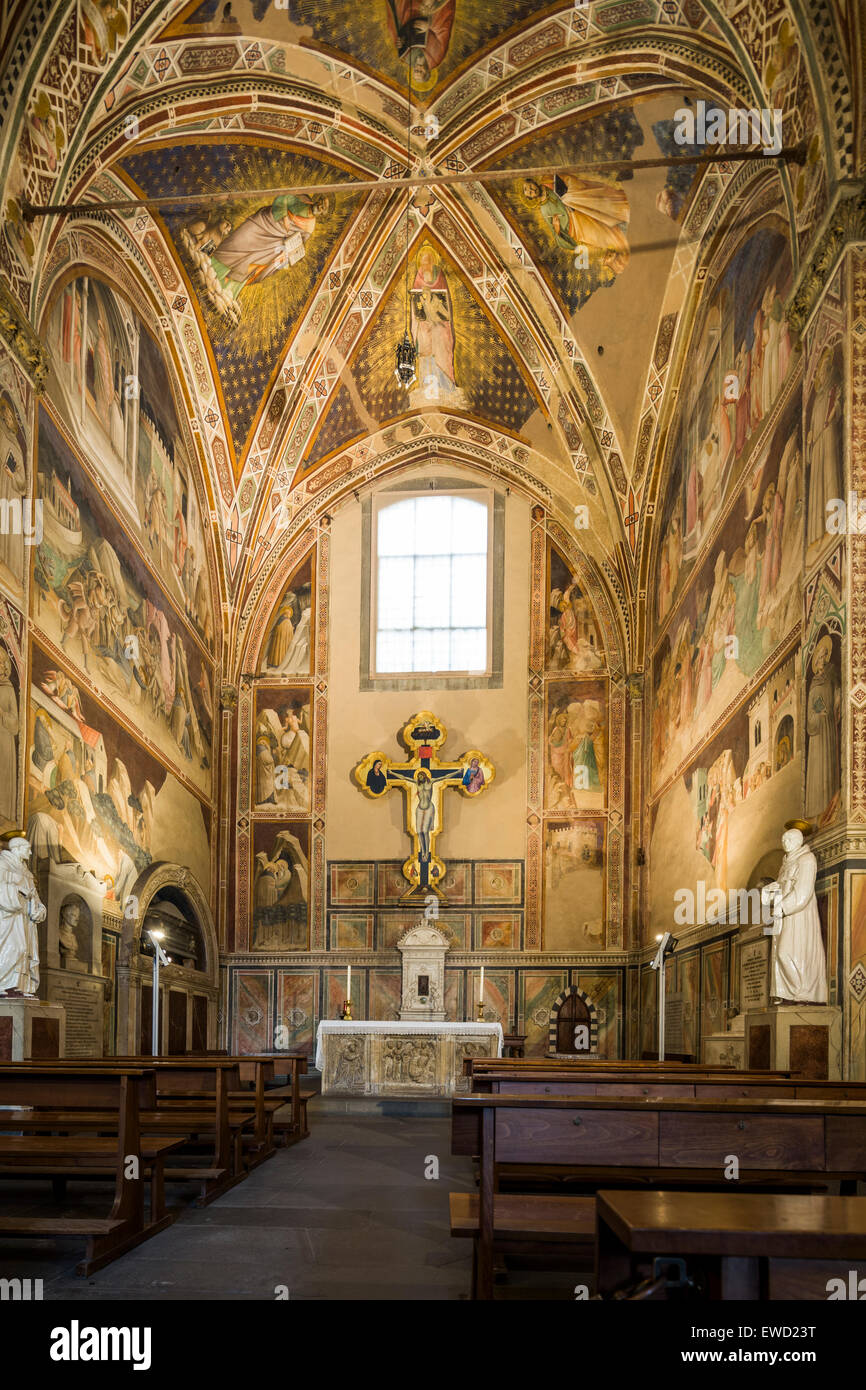The Castellani chapel, Basilica di Santa Croce, Basilica of the Holy Cross, Florence, Italy

Image details
Contributor:
B.O'Kane / Alamy Stock PhotoImage ID:
EWD23TFile size:
63.2 MB (3.7 MB Compressed download)Releases:
Model - no | Property - noDo I need a release?Dimensions:
3838 x 5757 px | 32.5 x 48.7 cm | 12.8 x 19.2 inches | 300dpiDate taken:
14 March 2015Location:
Florence, ItalyMore information:
The Castellani chapel: Vanni Castellani, rich and powerful friend of the Albizzi family, provided in his testament for the decoration of his chapel dedicated to Saint Anthony abbot, later on called “Blessed Sacrament chapel”. The significant cycle of fresco paintings which adorns the walls, covered with quicklime during the 1700s and found again the next century, was probably finished within 1385. Agnolo Gaddi, together with some collaborators such as Gherardo Starnina, painted here the Stories of saints. The Basilica di Santa Croce (Basilica of the Holy Cross) is the principal Franciscan church in Florence, Italy, and a minor basilica of the Roman Catholic Church. It is situated on the Piazza di Santa Croce, about 800 metres south-east of the Duomo. The site, when first chosen, was in marshland outside the city walls. It is the burial place of some of the most illustrious Italians, such as Michelangelo, Galileo, Machiavelli, Foscolo, Gentile and Rossini, thus it is known also as the Temple of the Italian Glories (Tempio dell'Itale Glorie). The Basilica is the largest Franciscan church in the world. Its most notable features are its sixteen chapels, many of them decorated with frescoes by Giotto and his pupils, and its tombs and cenotaphs. The construction of the current church, to replace an older building, was begun on 12 May 1294, It was consecrated in 1442. The Primo Chiostro, the main cloister, houses the Cappella dei Pazzi, built as the chapter house, completed in the 1470s. Filippo Brunelleschi (who had designed and executed the dome of the Duomo) was involved in its design which has remained rigorously simple and unadorned.